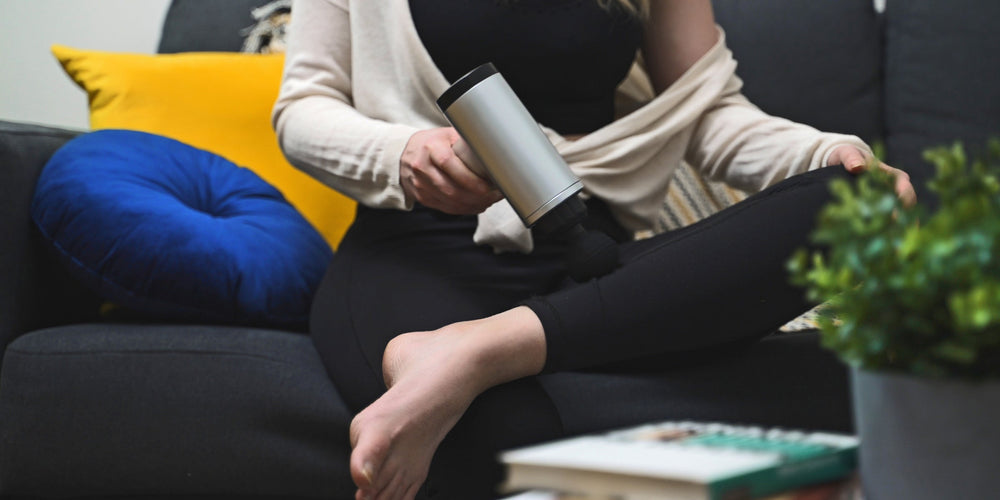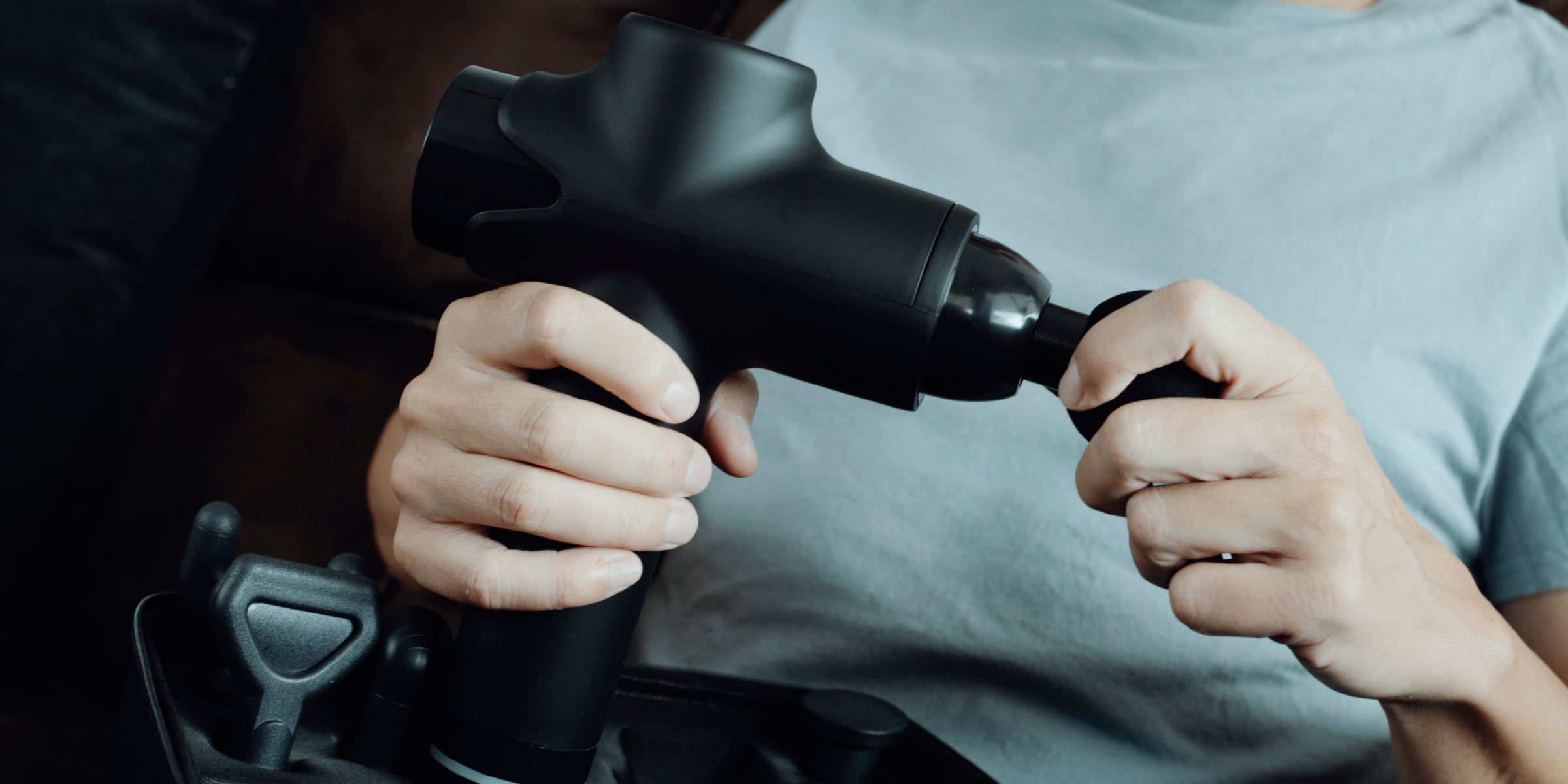Shake Off the Pain: Exploring the Therapeutic Effects of Vibration Therapy

Stay tuned to our latest news
Are you tired of chronic pain and muscle tension constantly holding you back? If so, it may be time to explore the therapeutic power of vibration therapy. This innovative approach to wellness is revolutionizing the way we manage discomfort and promote relaxation in the body.
Vibration therapy works by delivering gentle, controlled oscillations directly to the muscles and soft tissues. These vibrations stimulate sensory receptors, triggering a cascade of physiological responses that can provide profound pain relief and relaxation. By increasing blood flow, reducing muscle spasms, and even influencing the body's perception of pain, vibration therapy taps into the natural healing abilities of the human body.
So, get ready to experience a new level of comfort and mobility. It's time to say goodbye to lingering aches and hello to the refreshing benefits of vibration therapy.
What Is Vibration Therapy?

Vibration therapy involves mechanical vibrations to stimulate various parts of the body. It is a non-invasive and non-pharmacological method that aims to promote healing and improve physical functioning. The vibrations are typically delivered through a vibrating platform or handheld device, which can be applied directly to the skin or through clothing. The therapy works by stimulating the muscles, tendons, and ligaments, causing them to contract and relax rapidly. This vibration stimulates blood flow, releases tension, and promotes lymphatic drainage, contributing to various therapeutic benefits. Vibration therapy is commonly used for rehabilitation purposes, as it can help increase muscle strength and flexibility, improve bone density, and enhance overall physical performance. Additionally, it has also been found to have positive effects on pain relief, balance, and coordination. This technique is gaining popularity in both medical and fitness settings, making it an innovative and alternative approach for various health concerns.
How Does Vibration Therapy Work?
Vibration therapy utilizes mechanical vibrations to stimulate various physiological responses within the body. The mechanism behind vibration therapy lies in the activation of the skeletal muscle stretch reflex, which plays a crucial role in inducing rapidly repeated skeletal muscle contractions.
When a vibrating stimulus is applied to the muscle, it causes the muscle spindles, which are sensory organs within the muscle, to stretch. As a result, the muscle spindles send signals to the spinal cord, which in turn triggers the stretch reflex. This reflex leads to the activation of the motor neurons that innervate the muscle fibers, causing them to contract rhythmically.
Vibration therapy has several key influences on the musculoskeletal system, neuromuscular system, and peripheral circulation system. Firstly, it enhances muscle strength and improves neuromuscular coordination by facilitating muscle contractions. Additionally, it enhances bone density and helps prevent the loss of muscle mass.
This leads to increased oxygen and nutrient delivery to the muscles and removal of waste products. This leads to increased oxygen and nutrient delivery to the muscles and removal of waste products.
Moreover, vibration therapy has been shown to influence cellular processes. It stimulates the production of various growth factors, such as insulin-like growth factor-1 (IGF-1), which promotes tissue repair and regeneration. It also affects mechanotransduction pathways within cells, leading to changes in gene expression and protein synthesis.
Due to its effects on muscle, circulation, and cellular processes, vibration therapy has shown potential in a range of unique treatment applications. These include improving recovery after exercise, reducing muscle soreness, enhancing balance and proprioception, aiding in rehabilitation from injury, and even potentially mitigating age-related declines in muscle and bone health.
Types of Vibration Therapy
There are several types of vibration therapy that are commonly used to promote healing and relaxation. These include whole-body vibration, percussive therapy, and localized vibration therapy.
Whole-body vibration therapy involves standing, sitting, or lying on a machine that produces vibrations throughout the entire body. These vibrations stimulate the muscles and tissues, promoting circulation and increasing flexibility. This therapy is often used to improve muscle strength and bone density and enhance balance and coordination.
Percussive therapy, also known as vibration massage, utilizes a handheld device that delivers rapid, high-velocity pulses to targeted areas of the body. This therapy works by breaking up muscle tension and releasing knots or trigger points. The vibrations penetrate deep into the muscles, stimulating blood flow and providing immediate relief from pain and stiffness. Percussive therapy is commonly used to treat various conditions like muscle soreness, sports injuries, and chronic pain.
Localized vibration therapy involves applying vibrations to specific areas of the body to target localized pain or discomfort. This therapy can be achieved through vibration pads or massage tools. The vibrations help to increase blood flow to the affected area, reduce inflammation, and enhance the body's natural healing process.
What Are the Benefits of Vibration Therapy?

Vibration therapy has gained recognition in recent years for its potential benefits in improving various health conditions and body systems. This non-invasive treatment utilizes mechanical stimulation to induce positive physiological changes, ultimately promoting healing and overall well-being.
One of the significant advantages of vibration therapy is its effectiveness in managing chronic muscle injuries. Vibrations penetrate deep into the muscles, resulting in increased blood flow, which aids in the removal of metabolic waste products and allows for faster healing. Additionally, vibrations can help break down scar tissues, promoting tissue regeneration and improved flexibility.
Another notable benefit of vibration therapy is its ability to enhance micro-circulation. The vibrations stimulate the blood vessels, leading to improved circulation and oxygenation of tissues. This, in turn, can improve nutrient delivery to muscles and organs, promoting their optimal functioning.
Vibration therapy has also demonstrated effectiveness in addressing lower back pain, a common condition that affects numerous individuals worldwide. The vibrations targeted at the lower back region can help relax muscles, alleviate tension, and reduce pain levels.
Studies have suggested that vibration therapy may be beneficial in managing conditions such as osteopenia and osteoporosis, which are characterized by reduced bone density. The mechanical stimulation provided by vibrations can promote bone growth and prevent further deterioration, potentially reducing the risk of fractures.
How Do Professionals Apply Vibration Therapy in Clinical Settings?

In clinical settings, professionals apply vibration therapy as a complementary treatment method to enhance the recovery and rehabilitation process for various patients. The techniques and methods employed by these professionals involve the use of vibration plates and devices.
One common technique is whole-body vibration (WBV), where patients stand, sit, or lie on a platform that delivers mechanical vibrations. These vibrations stimulate the musculoskeletal system and elicit muscle contractions, promoting strength, flexibility, and balance. Another technique is localized vibration therapy, where vibrating devices are applied directly to specific body parts to target localized injuries or pain.
The benefits of vibration therapy have been observed in several clinical studies. Firstly, it has been shown to improve muscle strength and power, making it an effective tool for athletes and individuals undergoing physical rehabilitation. Additionally, vibration therapy has been found to enhance bone mineral density, which is crucial for patients with osteoporosis or other bone-related conditions.
Various types of patients can benefit from vibration therapy. Athletes can use it as part of their training regimen to improve performance and prevent injuries. Individuals recovering from injuries, such as fractures or sprains, can accelerate the healing process through targeted vibration therapy. Moreover, elderly individuals can utilize vibration therapy to improve balance and reduce the risk of falls.
Takeaway
Vibration therapy is an innovative approach to promoting wellness and managing chronic pain, muscle tension, and various other health concerns. This non-invasive therapy works by delivering gentle, controlled oscillations to the muscles and soft tissues, stimulating sensory receptors and triggering a cascade of physiological responses that can provide profound pain relief and relaxation. The mechanism behind vibration therapy lies in its ability to activate the skeletal muscle stretch reflex, leading to rhythmic muscle contractions, which in turn enhance blood flow, reduce muscle spasms, and influence the body's pain perception, tapping into the natural healing abilities of the human body.
Vibration therapy comes in different forms, including whole-body vibration, percussive therapy, and localized vibration, each targeting specific physiological needs and conditions. Professionals in clinical settings apply these techniques to help patients improve muscle strength, flexibility, bone density, and overall physical performance, while also addressing issues like lower back pain, sports injuries, and age-related declines in musculoskeletal health. As an alternative and complementary approach to wellness, vibration therapy offers a promising solution for individuals seeking relief from chronic discomfort and a path towards improved mobility and overall well-being.
Renpho Health Tips
-

Chronic Condition Comfort: How Foot Reflexology Can Provide Relief
May 16, 2024
Read more >
-

Chronic Pain Begone: Unveiling the Benefits of Compression Massage
May 14, 2024
Read more >
-

The Ultimate Therapy Gun Maintenance Checklist: Steps to Ensure Peak Performance
May 13, 2024
Read more >
-

Exercise Bike 101: Essential Maintenance and Care Tips
May 8, 2024
Read more >
-

Sole Support: Enhancing Circulation for Diabetic Foot Care
May 7, 2024
Read more >






